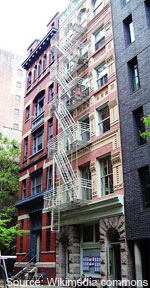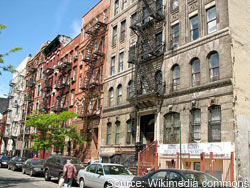
Apartment rentals are becoming increasingly popular--many major
cities will anticipate 1.5 million new renters this year, according to
Forbes Magazine. Due to this spike in rental pursuit, trends in the
apartment market are shifting. Read on to find out what you can expect to find
in rental properties in the coming years, and what it might mean for potential
tenants.
Occupancy Up, Rent Growth Down
The growth of rent costs is down
nationwide from 4.1 percent in 2012 to 3.2 percent in 2013, according to a
report by Axiometrics Inc., a leading provider of apartment data and market
research. This is the lowest rate since August 2010. However, though rental
rates are down, occupancy rates are soaring--reaching a national average of 94.4
percent in March 2013. Thirty-eight of the top 88 metropolitan areas in the
country are reporting occupancy rates above 95 percent, including Oakland, San
Francisco, Houston, Denver, Nashville, San Jose and Seattle.
Communities Are Growing More Dense
Occupancy rates are
increasing due to a growing demand for apartment living. Apartment communities
are growing more densely populated--they are now averaging 200 units per acre,
up from 150. So what has made renting suddenly so desirable?
According to
U.S. News and World Report, baby boomers--around 75 million of them--
are following a downsizing trend to live a simpler lifestyle with more proximate
access to amenities and family, opting to rent in urban areas rather than remain
at their home in the country. Additionally, about 80 million "echo-boomers" (the
offspring of baby boomers), ranging from 17 to 31 years old, are entering the
market as renters, flocking to cities in droves in search of eco-friendly, urban
lifestyles with ready access to public transit and a diverse job market.
Apartments Are Growing Smaller
To accommodate the increasing
demand for rented living space, units are steadily decreasing in size. The
average size of an apartment is now 700 square-feet, down from the previous 800
square-feet. Many cities are implementing a trend known as
"micro-living"--strategically-constructed studio apartments no more than 300
square-feet that utilize 9-foot ceilings for vertical space and multi-purpose
storage-turned-sleeping apparatus for low-cost, energy-efficient renting.
Shared Spaces and Social Living
To compensate for the shrinking
size of apartment units, properties are offering more shared living areas, such
as communal lounges, rooftop gardens, and patios. This way, tenants can relax
and spend leisure time outside of their small unit space, and still enjoy the
affordable rental rates. Access to outdoor amenities is also highly-welcomed and
appreciated by renters in urban environments, and the sense of community that
comes with common areas facilitates social interaction between tenants.
Green and Eco-Friendly is a Must
Being environmentally-friendly
is becoming a top priority for many Americans, and apartment developers realize
that. Sustainable design and construction, energy efficiency, and recycling
capabilities are all essentials for greener apartment living. Many properties
are even providing on-site plug-in stations for electric cars.
Niche Amenities
Unique amenities appealing to specific
demographics are becoming trendy in the current rental market. While pet
ownership used to be rather frowned-on in apartment communities, many properties
are beginning to implement features catering to tenants' beloved furry friends.
Some communities are offering not only pet exercise areas, but veterinary
services, grooming and day care facilities on-site. Other specialized amenities
include bike storage, fitness centers, and Zipcar lots--a car-sharing company
optimum for an urban-dweller striving to be environmentally-friendly. With more
and more people seeking apartment lifestyles, property owners are striving to
accommodate all of their unique needs to snag their occupancy.
The American Dream Has Changed

The ultimate goal of success was once buying a home with a white
picket fence --now young professionals and retired baby boomers alike are moving
from the suburbs in favor of life in the big city. Echo-boomers (or
"millennials") are getting married and starting families later in life, and
focusing on their careers first. Moving to the city, snagging a dream job, and
enjoying the single life surrounded by the exciting hustle and bustle of an
urban lifestyle has replaced the quaint home in the country as the ideal
American dream.